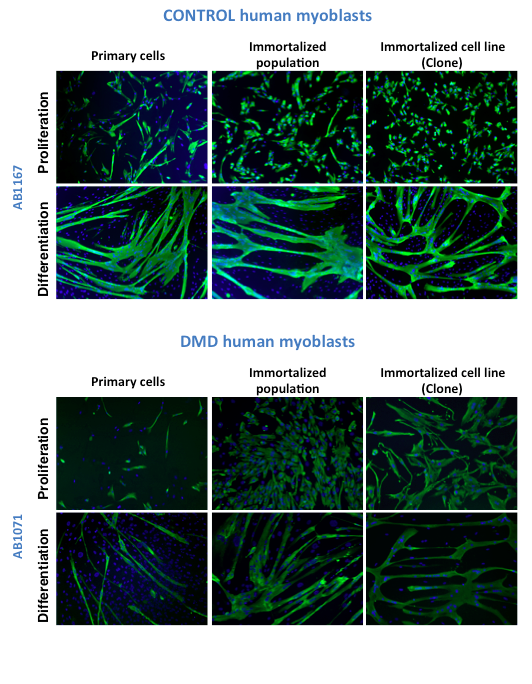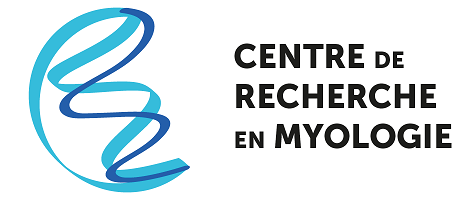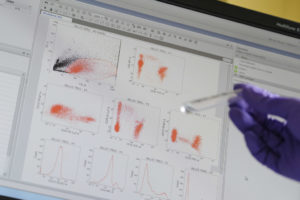Myoline : A platform for immortalization of human cells
With the development of many different innovative therapeutic approaches for neuromuscular diseases, targeting DNA, RNA or proteins, muscle cells isolated from patients, called myoblasts, represent an ideal in vitro model to assess these approaches: they provide an easy material to screen or assess efficacy while reducing animal experimentations. Importantly, they also carry the exact mutation of the patient in its own genetic environment. There are limits to these in vitro approaches: human somatic cells have a limited proliferative capacity regulated by the mitotic clock, and reach replicative senescence after a defined number of divisions. This limit in proliferation is reached even earlier in degenerative diseases. We have neutralized the replicative senescence of human muscle cells by using a double transduction with lentiviral vectors, thus creating immortal human cell lines.
The platform for immortalization of human cells of the Institute of Myology had generated over 180 human myoblast cell lines isolated from patients suffering from over 36 different diseases (DMD, LGMD, FSHD, SMA…). Because access to muscle biopsies may be limited for some pathologies, we have also developed the immortalization of skin fibroblasts. These immortalized fibroblasts are then transduced by an inducible MyoD, a muscle specific transcription factor, and these myoconverted cells form myotubes and express muscle markers just like muscle cells.
The loss of muscle mass in patients affected by neuromuscular diseases is often accompanied by its replacement by fibrous and/or adipose tissue. In recent years, research in this field has focused on the role played by fibro-adipogenic progenitors (FAPs) due to their ability to differentiate into adipocytes or fibroblastic cells. To support this research, Myoline is currently developing FAP models isolated from different muscular dystrophies.
Since several years, these cell lines are available to the scientific community on a collaborative basis, and many international laboratories already use them. A subset of these cell lines can also be used under MTAs for the development of therapeutic tools by private partners, whenever the initial consent signed by the donor allows such use.
Cell lines examples: CellsMyoline
Contacts :

| Name | Position | ORCID |
|---|

